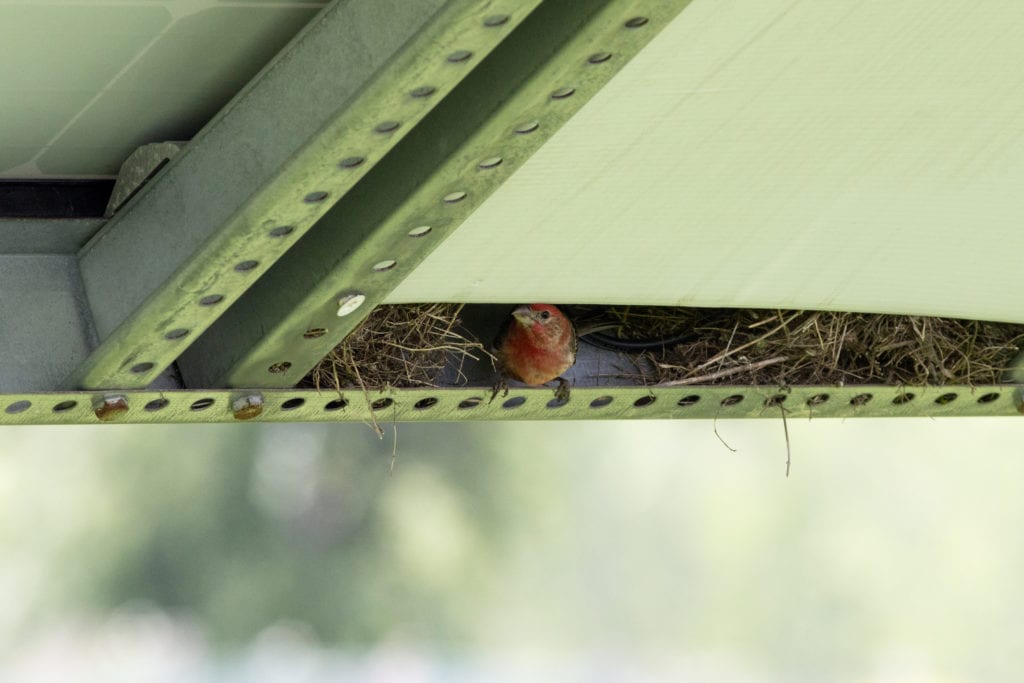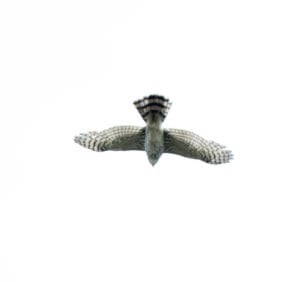
Maine Audubon’s mission is to conserve Maine’s wildlife and wildlife habitat by engaging people in education, conservation, and action. Today, that mission seems more important than ever. Our educators, scientists, advocates, and naturalists are committed to keeping you connected to the natural world as we deal with the coronavirus situation together. Check in every weekday on our Connections page for family activities, parent/teacher tips, backyard birding, nature exploration at our sanctuaries, and more.
One might feel left behind by the whole backyard birding movement without a backyard of your own, but it doesn’t have to be that way. Anyone with a window can enjoy a birdy bounty, even if you might need to get a little creative. Here are some tips to help you make the most of your urban experience.
Birds Still Gotta Eat!
Apartment dwellers can still enjoy the experience of feeding birds, though they may have to alter their expectations a bit. Fewer species visit feeders away from ground level, but the flip side is that apartment dwellers may be able to develop a closer relationship with the birds who do make the trip.
House Finches are one of the most common birds to visit feeders placed on a balcony or high-rise window. Male birds of this gregarious species are easily identified by their reddish head and chest on a streaky brown and white body. Females, who are usually nearby, are streaky brown all over.
Apartment residents feeding House Finches often bear witness to behaviors that may go unseen at ground level, where birds hide out under the foliage or are chased off feeders by other birds. Males will sometimes feed females in the early days of courtship. There might be singing and wooing and intrusion from rivals; the whole of the House Finch drama may unfold on your balcony.
Please give careful consideration to how to set up your feeders. You want to make sure your feeder is strongly secured, so that it doesn’t fall down to the street below. Strong suction feeders tend to work, and also bring the birds closer to the window, which is safer for them and makes for easier viewing. Also give consideration to which seed you use. Bird seed with shells makes for a lot of waste that will clutter your balcony or the street below, so sticking to hulled seeds is preferred.
Hummingbirds are also known to visit feeders placed on higher floors. Nectar feeders hung out a window will do the trick, and other birders have reported hummingbirds visiting potted flowers. If using a hanging feeder, please make sure to skip the red store-bought stuff and fill your feeders with a simple mixture of four parts water and one part white sugar.
Keep Your Eyes on the Skies
I know you know this already, but one of the greatest things about birds is that they fly! So, there are plenty of birds to be seen just by looking out the window and watching what’s flying.
Urban dwellers may see different kinds of birds flying out their windows: residents and migrants.
Resident birds are ones that live in the city year-round. Depending on the density of your area, those birds may include the expected Rock Pigeons, European Starlings, House Finches, House Sparrows, American Crows, and other common birds. You may or may not be dazzled by that list, but there are more interesting birds out there, too, including the birds that hunt those resident birds.

A variety of raptors patrol urban areas in search of prey, and their exploits can make for an incredible show. The Cooper’s Hawk is an ambush predator that has adapted well to hunting among man-made habitats. These large hawks sneak up on pigeons and starlings by flying low over rooftops or alongside buildings. Peregrine Falcons take another approach, relying on their famous speed to take flying birds right out of the air. Both of these raptors nest in cities and are fairly common residents; look for a panicked flock of scrambling pigeons to alert you to their presence.
Migrant birds will also pass over your apartment on their way to nesting grounds elsewhere. Spring migration in Maine is hottest in April and May as billions of birds of many species return from the neotropics to the warming north. Most of these birds fly at night, but they may appear on nearby treetops in the mornings. Hawks and other raptors fly during the day, giving anyone with a view of the sky a chance to see them.
Nightly migrations are dependent on weather conditions, and so keeping an eye on the BirdCast website will help you focus your sky-watching. The site keeps track of time of year and weather patterns to predict what will be passing over your area during a given week. The savvy birder can also learn to track migrating birds at night by watching as birds pass by a full moon (that’s how all migration used to be tracked!) or by listening with special audio set-ups. The latter may take some time to set up, but, hey, time is the one thing we’ve got right now.
